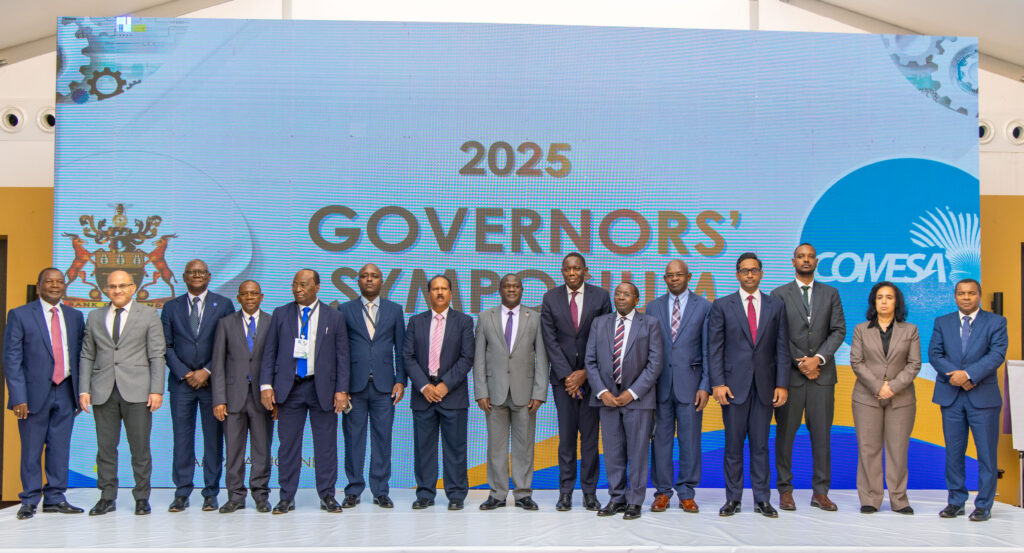
A renewed push for deeper monetary and financial integration dominated discussions as COMESA’s Central Bank Governors met for their 29th Committee Meeting in Kampala on Friday 21 November 2025. They mapped out the region’s economic future and underscored COMESA’s core objective which is to accelerate economic growth and improve livelihoods through robust regional integration and trade facilitation.
Over the past three decades, COMESA has pressed ahead with initiatives to streamline cross-border procedures, boost ease of doing business, and accelerate intra-regional trade and investment. Intra-COMESA trade reached $14 billion in 2024, a notable milestone, but still only accounts for about 6% of the region’s total trade, signaling substantial room for growth and deeper integration.
Speaking during the opening ceremony, Dr Dev Haman Assistant Secretary General for Administration and Finance stressed the need of addressing trade barriers and strengthening regional cooperation as essential to unlocking this potential.
He highlighted ongoing moves to improve cross-border efficiency through customs automation, digitalization of procedures, and closer coordination among border agencies.
“By cutting trade barriers and improving regional cooperation, we as COMESA seek to raise intra-regional trade and match or surpass peers, with automation of customs, digital procedures, and coordinated border agencies, alongside service-sector negotiations to advance economic integration,” said Dr Haman.
Dr. Michael Atingi-Ego, Governor Bank of Uganda and Chairman of COMESA added that a resilient COMESA hinges on robust macroeconomic policy, vibrant regional trade and empowered financial institutions. With decisive action, central banks can anchor a more connected, prosperous and self-reliant COMESA.
The Governors reaffirmed support for negotiations across key service sectors—business, financial, transport, communications, tourism, construction, and energy—to advance a broader economic integration agenda that benefits all member states.
In remarks highlighting their important role, the Governors, noted the critical role of monetary and financial integration in removing capital-flow barriers and boosting intra-regional trade. A more integrated monetary framework is seen as the bedrock for stabilizing economies and sustaining development across COMESA.
The discussions also celebrated progress amid global headwinds, including shifting U.S. policies, tightening global financial conditions, and climate-related shocks. Governors were urged to sustain resilience and pursue climate-smart financial policy, with a focus on digitalization as a driver of inclusion and competitiveness as the region builds interoperable financial and trade systems.
On the institutional front, the COMESA Monetary Institute (CMI), who are the convenors of the annual meetings, reported on the continued capacity-building and research programmes which they said help strengthen macroeconomic management and financial-sector stability in the region. CMI Director Dr Lucas Njoroge said the training programmes and evidence-based policy work are helping member central banks sharpen their analytical capabilities and policy advice.
The COMESA Clearing House (CCH) highlighted momentum toward modernization of REPSS and migration to the ISO 20022 standard, a major step for interoperability and data harmonization in regional payments. Ms Jedidah Ndebele CCH Executive Secretary encouraged the Governors to bring more central banks onto the system to maximize the benefits—faster export payments, reduced mistrust among traders, and deeper regional trade.
Additionally, the Digital Retail Payments Platform (DRPP) is advancing, with a Friendly User Trial between Malawi and Zambia marking a milestone toward regional digital financial integration. This platform promises to reduce dependence on hard currency, empower small traders and women, and broaden financial inclusion.
As the meeting closed, officials reaffirmed their commitment to accelerating monetary and financial integration, reinforcing COMESA’s readiness to become a stable, integrated economic zone capable of delivering sustained growth and development for the region.

